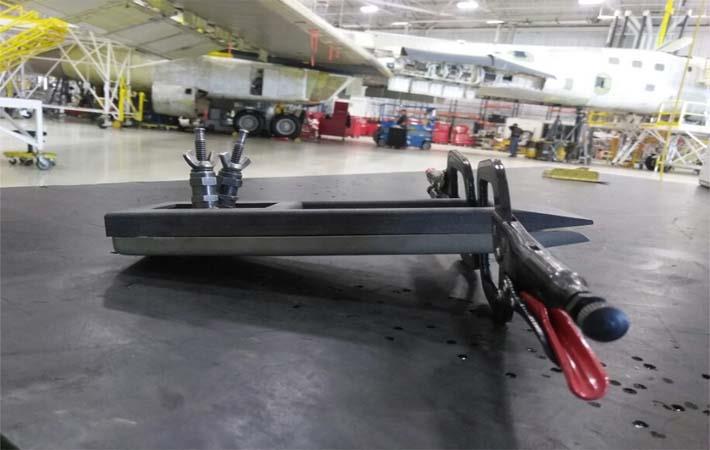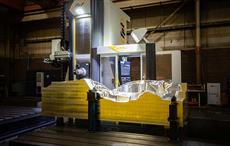The Utah Advanced Materials and Manufacturing Initiative (UAMMI) has manufactured and fit-checked its first carbon fibre 3D printed part for the United States Air Force – a first aid kit restraint strap for the B-1 aircraft at Tinker Air Force Base in Oklahoma. UAMMI collaborated with Impossible Objects and used its printer to create the part.
A year ago, UAMMI was awarded federal funds to create carbon fibre additive manufactured parts (“3D printed”) for the United States Air Force. The goal was to replace broken parts on older legacy aircraft as most original parts are no longer produced.The Utah Advanced Materials and Manufacturing Initiative (UAMMI) has manufactured and fit-checked its first carbon fibre 3D printed part for the United States Air Force – a first aid kit restraint strap for the B-1 aircraft at Tinker Air Force Base in Oklahoma. UAMMI collaborated with Impossible Objects and used its printer to create the part.#
Over the last year, UAMMI has been working with the Air Force to identify non-critical parts that can be replaced using additive manufacturing technology. One of the earliest agreed upon parts was a restraint strap for a first-aid kit in the B-1 aircraft. In many of these aircraft, the Air Force has experienced failures with original restraint straps, which puts at risk the dislodging of first-aid kits during flight. As original replacement straps are no longer manufactured, there are significant costs and wait time to have new parts produced through traditional means.
Using a state-of-the-art additive manufacturing machine from Impossible Objects UAMMI has successfully produced a replacement part using carbon fibre and thermoplastic materials. In April, they took the part to Tinker Air Force Base to fit check it with an operational B-1 aircraft. The installation of the part included adding new rivet holes, inserting a buckle in the strap cavity, and fastening the strap to the cockpit wall panel. The installation went smoothly and the B-1 programme engineers were pleased with the fit, commenting that they were surprised the part fit so well on the first try.
The additive manufacturing project is being funded through the Air Force Research Laboratory under an America Makes programme called the Maturation of Advanced Manufacturing for Low Cost Sustainment (MAMLS). Through MAMLS, the Air Force intends to demonstrate that additive manufacturing can be used to replace non-critical parts on-demand. Of particular interest are instrumentation knobs, wiring harnesses, small brackets, electrical connectors and similar items.
“Additive manufacturing represents a huge opportunity for Utah’s advanced manufacturing industry,” said Jeff Edwards, UAMMI executive director. “The composite additive parts that we are creating for the Air Force will significantly reduce both the time and cost of aircraft repairs. There is a long list of parts we plan to test and this project will help position Utah as the technology leader and innovator in this new field.”
For the printing, UAMMI has partnered with equipment manufacturer Impossible Objects from Illinois. Their unique additive manufacturing machine uses Composite-Based Additive Manufacturing (CBAM) technology to 3D print with carbon fibre and thermoplastic materials. The Air Force is particularly interested to prove out and accelerate CBAM technology as well as build a body of knowledge for them to use in determining which replacement parts are best suited for Composite-Based Additive Manufacturing.
Now that the replacement part has successfully passed the initial B-1 fit-check, the team is ready for the final steps. Before further production, they must run the part through a fire, smoke and toxicity test at the National Institute for Aviation Research at Wichita State University. Upon successful completion of that test, the part will be ready for USAF approval and installation into the operational B-1 fleet. (SV)
Fibre2Fashion News Desk – India


